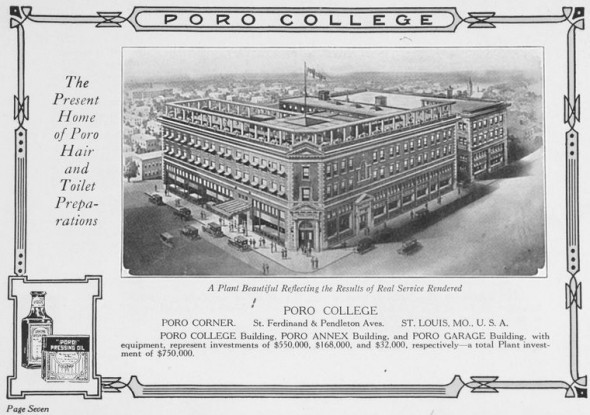Excerpt from the September 1913 issue of The Crisis:

The characteristic of the Great Northwest is its unexpectedness. One looks for tall black mountains and ghostlike trees, snow and the echo of ice on the hills, and all this one finds. But there is more. There is the creeping spell of the silent ocean with its strange metamorphoses of climate, its seasons of rain and shine, until one is puzzled with his calendar and lost to all his weather bearings. Then come the cities. Portland one receives as plausible; a large city with a certain Eastern calm and steady growth. The colored population is but a handful, a bit over a thousand, but it is manly and holds its head erect and has hopes. Portland was the only place out of nearly fifty places where The Crisis has lectured that did not keep its financial contract, but this was probably a personal fault and not typical. Typical was the effort to establish a social center, to enlarge and popularize a colored hotel, to build new homes and open new avenues of employment.
From Portland one goes with a sense of puzzled inquiry. Why have colored folks come here? Why should they stay and what is their outlook? Then comes Tacoma and the first surprise. Why is Tacoma? one asks–so dainty a city high on its hills, with the breath of promise in its lungs? Here are less than a thousand colored folk, but peculiarly free and sturdy and individual. They have a colored paper which is not colored. They have a branch of our association with a genius for a secretary–a soft-voiced woman, utterly feminine, and yet an untiring leader of men, who may yet make colored Tacoma famous. Here the fight against race prejudice has been persistent and triumphant. There is no freer city in America, in hotel and restaurant and soda fountain. Laborers have a man’s chance, and in the civil service are many colored people. The mayor of the city, being wise, came to our lectures and ate at our banquet and saw the passing of the silver loving cup, the treasure of all the journey. Next day three of us went to Seattle. See America and then–Seattle. Seattle is the crowning surprise–the embodied unexpectedness. Imagine, if you please, north of the northmost woods of Maine, a city of 300,000, gleaming with mighty waters, where the navies of the world may lie. Washington has over 6,000 Negroes and 2,500 live in Seattle.

They rival Los Angeles as a group. There is the lawyer, Andrew Black; the doctor, David Cardwell; there is caterer Stone, who dined us, and the inimitable Norris, who looks at you with twinkling gravity and talks of “your” people. There was the minister, clean in body and soul. Above all there was Beattie. I remember her as a chubby schoolgirl in Boston out of Denver. Then twenty long years and more, and we meet here in Seattle in the fire glow beside the cut glass and silver of a dinner that I hunger and thirst for yet. Another mayor came to our lecture, jolly and strenuous, and in the midnight I said good-by and went my way. So the journey in the Great Northwest ended. Ended as this stupendous land could end in three whole days and four whole nights in one sleeping car on the way back to Kansas City. In that journey I recalled everything from the Grand Canyon to Seattle. I recalled the charming and simple hospitality of the best-bred race on earth.
Further Resources:
Seattle’s Black Victorians 1852-1901 by Esther Hall Mumford
Northwest African American Museum
Seattle’s Black History
The Logger’s Daughter
Exposed: The Unique History of African American Pioneers




